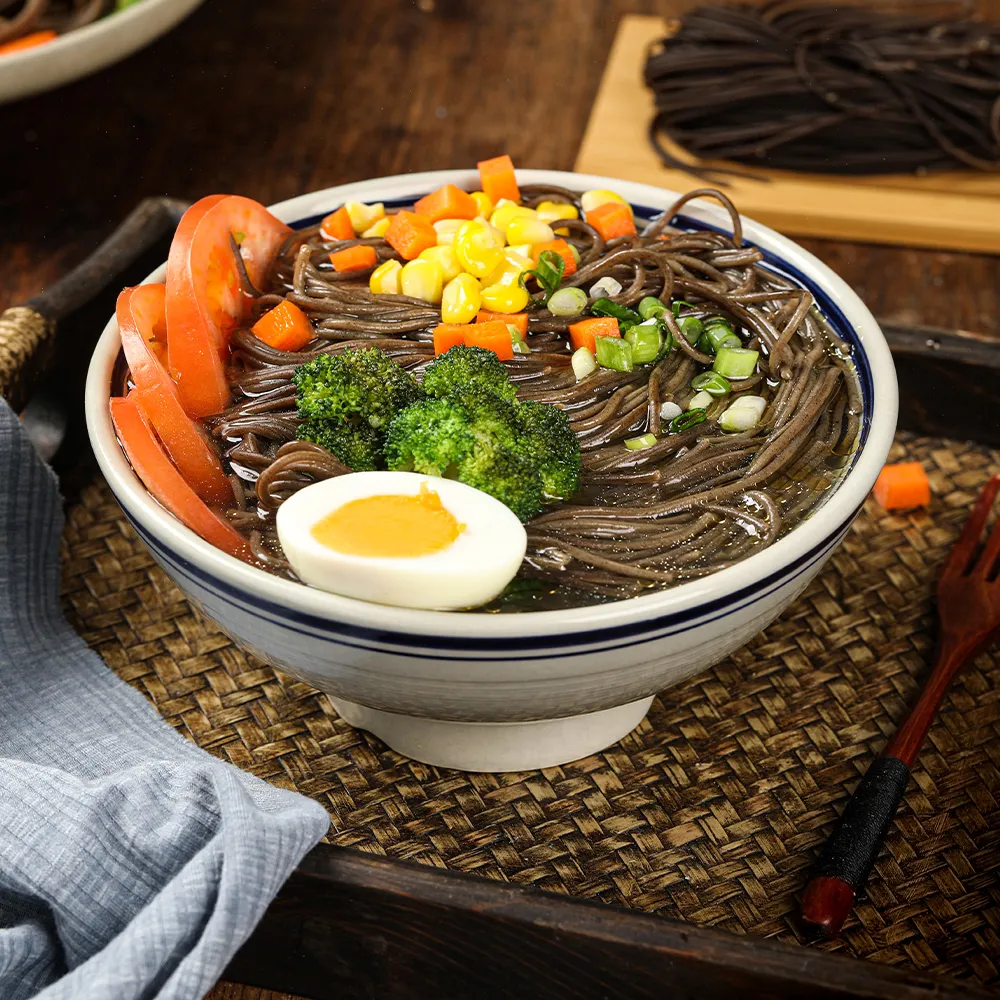what is an udon noodle made of
What is an Udon Noodle Made Of?
Udon noodles are a beloved staple in Japanese cuisine, known for their thick, chewy texture and versatility in various dishes. Originating in Japan as early as the 9th century, these noodles have stood the test of time, evolving into numerous regional variations. At the heart of udon noodles lies a simple yet fundamental question what are they made of?
Key Ingredients of Udon Noodles
The primary ingredients in traditional udon noodles are straightforward and can be found in most kitchens. They include
1. Wheat Flour The main ingredient in udon noodles is high-quality wheat flour. Unlike many other Asian noodles, which may be made from rice or buckwheat, udon relies solely on wheat. The type of flour used is crucial; most udon recipes call for a medium-gluten or high-gluten flour. This high gluten content contributes to the noodles' firm and chewy texture, which is characteristic of udon.
2. Water The second essential component is water, which is mixed with the flour to create a dough. The quality of water used can affect the final texture and taste of the noodles. Typically, purified or filtered water is preferred to avoid unwanted flavors that might be present in tap water.
3. Salt Salt is not just a flavor enhancer; it plays a role in improving the dough's elasticity. By adding salt to the water before mixing it with flour, the dough's structure is strengthened, helping it achieve the desired chewy consistency.
The Process of Making Udon Noodles
Creating udon noodles is both an art and a science. The process traditionally involves the following steps
1. Mixing the Ingredients The first step is to combine the wheat flour, water, and salt to form a dough. This mixture needs to be well-kneaded until a smooth, pliable dough is formed.
2. Resting the Dough After kneading, the dough is allowed to rest for at least 30 minutes. This resting period allows the gluten to relax, which is crucial for achieving the desired texture.
what is an udon noodle made of

3. Rolling and Cutting Once rested, the dough is rolled out into a flat sheet and then cut into thick strips, which define udon noodles. The thickness of the noodles can vary based on regional styles, but they are generally between 2 to 4 mm wide.
4. Cooking the Noodles After cutting, the noodles are boiled in water until they are tender yet still firm to the bite. This cooking time can vary based on the thickness of the noodles. Fresh udon noodles typically require around 8-12 minutes to cook thoroughly.
5. Cooling and Serving Once cooked, the noodles can be rinsed under cold water to stop the cooking process, then served hot in broth or with a variety of sauces and toppings, or even chilled in salads.
Regional Variations and Innovations
Udon noodles come in various regional types, with each area of Japan boasting its unique style. For instance
- Sanuki Udon Hailing from Kagawa Prefecture, Sanuki udon is famous for its firm and bouncy texture. It's often served in a simple broth with minimal toppings, allowing the noodle's flavor to shine.
- Kake Udon This is a basic style of udon served in a hot broth, often topped with green onions, or other simple condiments.
- Zaru Udon Chilled udon served with a dipping sauce, Zaru udon is perfect for hot summer days, showcasing the noodle's texture and flavor.
Conclusion
In summary, udon noodles epitomize the beauty of simplicity in Japanese cooking. Made from just three primary ingredients—wheat flour, water, and salt—they offer a delightful combination of textures and flavors that have captivated food lovers for centuries. Whether enjoyed in a warm broth or chilled with a dipping sauce, udon noodles are a testament to the culinary ingenuity of Japanese cuisine, inviting you to savor each bite. Their enduring popularity underscores the timeless appeal of high-quality, homemade ingredients and traditional cooking methods, showcasing how a few basic elements can yield something truly exceptional.
-
Unleash Your Inner Chef with Delectable Italian Pasta CreationsNewsAug.01,2025
-
Savor Health and Flavor: Irresistible Soba Noodles for Sale Await!NewsAug.01,2025
-
Nourish Your Body with Premium Organic Ramen - A Culinary Delight AwaitsNewsAug.01,2025
-
Elevate Your Dishes with Our Exquisite Kinds of Egg NoodlesNewsAug.01,2025
-
Dive into Flavorful Convenience with Our Ramen OfferingsNewsAug.01,2025
-
Discover Exquisite Types of Naengmyeon and Chilled Soba NoodlesNewsAug.01,2025
-
Is Whole Wheat Pasta Healthy?NewsMay.30,2025
Browse qua the following product new the we

















































































































